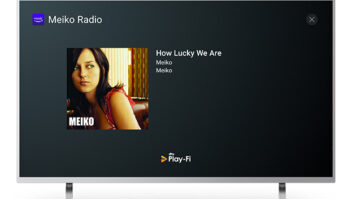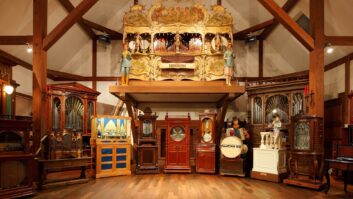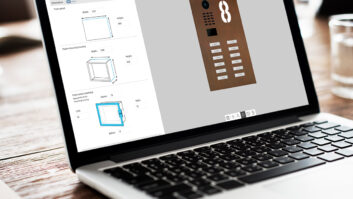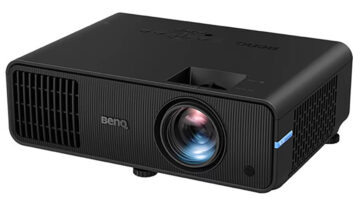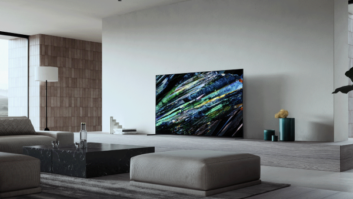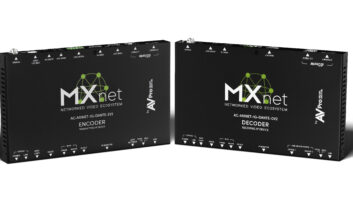The pursuit of 3D delivery in the living room has reached a frenetic pace for content creators and hardware manufacturers in the past couple of years. In response to these changing market conditions, Montreal-based 3D video innovator Sensio Technologies Inc. has fast forwarded its business plan for the cutting-edge technology.

Studios are focusing on 3D and are building a significant library of 3D titles for the consumer market. Back in 1999 when Nicholas Routhier founded the company with VP of sales and marketing Richard LaBerge, they were only beginning to develop their knowledge of 3D technology but recognized a growing phenomenon. In July 2003, when Residential Systems introduced the company, Sensios technology was ready for the world, but the world wasnt quite ready for it. Since then, the company has linked with key players in the business to drive consumers to demand 3D in their homes.
Times Catch Up to Sensio
This past NAB was all abuzz with 3D, but just five years ago Routhier was preaching in the desert: 3D is coming, 3D is coming! I was trying to convince the industry not only that what we had to offer was good, Routhier said recently, but we had to convince people that 3D was actually something that was coming and that was worth investing in.
Now people are excited about the 3D experiences they have in the theater, which might propel home sales as well. Youve got a 3D market out there thats thriving, he said. Look at Hannah Montana. Its phenomenal. They shot a concert, and they made more than $67 million in theaters. Also shown in 3D, Beowolf did over $120 million. Every time theres a 3D movie, the 3D version generates a lot more revenue than the 2D version. Everybody wants to get on board the 3D train.

Sensios original plan for home theater 3D was to move from set-top boxes to a converged system where their technology was embedded in display hardware when market conditions demanded more and more content. We thought it would take 10 years to reach that stage, Routhier said. In our minds, 2013 would have been when there would have been enough changes in the industry to warrant a change. But things have changed so fast because of studios jumping on board the 3D train. 3D is gaining acceptance as an experience in theaters. This means that the next logical step is for these movies to come to the consumer market, Routhier added.
In 2003, Sensio launched a high-end set-top box for the consumer market to allow 3D viewing at homeat the same quality level as what would be seen in the digital theaters today. In 2003, our product was very high-end with a limited market, Routhier said. It was a niche product just to prove the concept that high-quality 3D at home was possible and to get the attention of studios.
With the big influx of 3D movies doing great at the box office in recent years, suddenly manufacturers decided to react. Within the last year, Mitsubishi and Samsung announced that they are putting 3D TVs on the market, and Sensio signed a deal for the integration of Sensio technology in SpectronIQ displays.
Because of this move to sell 3D TVdisplays that have been designed for 3Dwe are now moving from the set-top box business to an IP integration business, Routhier explained. Sensios technology now will be imbedded inside displays.
3D@Home Consortium
Last year, Sensio was asked to present its technology at a show called 3D Biz-Ex, a Stereoscopic 3D Symposium and Exhibition near San Francisco, that was organized by Insight Media and the U.S. Display Consortium (USDC). We did a presentation entitled Is a 3D consortium necessary at this point? Routhier said. Right after the presentation, Insight Medias president, Chris Chinnock said Yes to Routhier.
From that point on, the two companies were strong collaborators and founding members of that consortium. Their mission now is to help 3D technologies get inside homes and to create favorable business conditions for their products. Its a unique position because it takes, at this point, content people and manufacturing people, Routhier noted. We hope that later well get retail people inside the loop.
The group is making major inroads through its agreement with International Datacasting Corp. (IDC) for the integration of the Sensio 3D cinema decoding technology into products for the digital cinema market. The technology also will be integrated into digital theaters in the U.S., via Sensios partner AccessIT. Its flagship technology, Sensio 3D, allows the high-quality distribution of 3D content through conventional 2D channels and playback on any display device, including plasma TVs, HDTV, and glass-free 3D displays. What can be applied to theater displays can be applied to displays in home theater, as well.
Developing Standards
The primary issue for 3D penetration in the market is agreeing on format standards. Studios and manufacturers have begun to develop requirements and metrics for measuring the differences between different formats. Although the 3D@Home Consortium is not a standards-making body, it will work to define requirements and make links with the standards-making body.
Were trying to establish a common vocabulary, Routhier said. Right now its a bit of a jungle. Samsung and Mitsubishi are selling what they call 3D-ready TVs. What does that mean? Consumers have no idea. Most retailers have no idea.
In theory, a 3D-ready TV is a display that, if fed in the right way with the right format in the right resolution using glasses bought separately and emitters bought separately, will offer a 3D experience. For most people, however, it is too complex to understand and not very convenient. You dont know where to buy the accessories, Routhier said.
Its Routhiers goal at Sensio to create some order in that jungle, define these terms, and explain them to retailers and consumers so that when people buy 3D related products, they know they will work and it will be an easy and enjoyable experience, instead of a configuration nightmare.
The Future: Alternative Content
Linked to the recent announcement that Sensio made with AccessIT and IDC for digital theaters, alternative content is seen as the next big thing for theaters, these include some pre-recorded but mostly live concerts, sporting events, and shows. This is something we are bringing now with the deal we just signed, Routhier said. This means you could see the Superbowl in 3D or see a live rock concert inside the theater.

Sensio has created an encoder and decoder to allow 3D viewing at home.
Following that, there will be an announcement of studios releasing 3D titles in Blu-ray in the Sensio format. Meanwhile, the company is working with manufacturers to integrate Sensio technology inside their TVs. We have SpectronIQ, and we are planning to announce a few others this fall, Routhier said.
Regarding 3D technology, Routhier holds that everything exists. The problem now is not a question of whether technologies are there or not, its a question of how do the industry gets everyone to work together to make it a viable business. As complicated as switching from standard def to high-def, theres a major commitment involved.
Parallel to the HD process of taking over the market, it is necessary for content to be made in the newas yet undefinedformat of 3D. You need broadcast standards and you need the bandwidth and you need TVs on the other side and you need to know who would start first, Routhier said. Its chicken and egg. We are facing these issues now on the 3D side. Thats why the 3D@Home Consortium is so important. For the first time we get all the proponents together.
Joy Zaccaria is a freelance writer in Brooklyn, New York.
